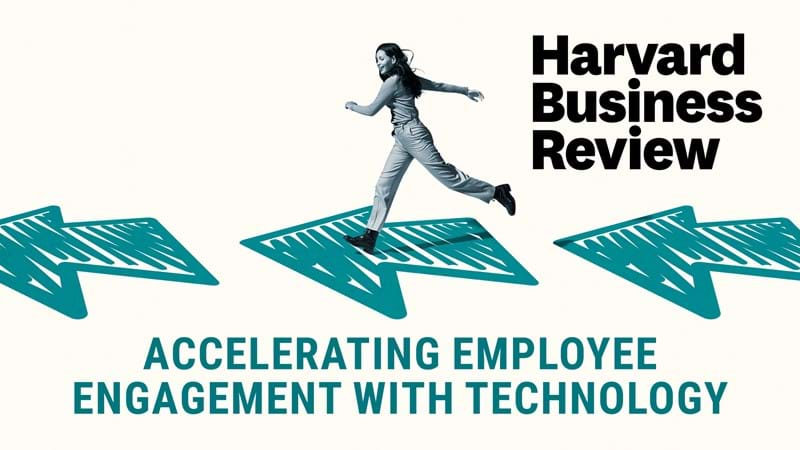5 reasons you need to upgrade your outdated intranet
Your intranet is outdated and there are no signs that things are getting better. Your intranet provider's tech remains stagnant with a lack of innovation on the roadmap and their employees are jumping ship so they can't service you as they should. Customers are leaving in their droves, and you're getting serious envy seeing all the new employee experience tech that isn't an option because you're using the floppy disk of intranets. Not upgrading your intranet may seem like the easiest option, but soon you won't be able to remain on a legacy platform. Here are 5 reasons why the time to update your outdated intranet is now.
Your employees deserve better from your intranet
A modern intranet has the power to transform employee experience, upgrade engagement, drive collaboration and reignite productivity, but a bad intranet can do the opposite. At a time when the digital experience you give your employees matters more than ever, ignoring the warning signs and taking a ‘patch-it-up’ approach is a risky move most enterprises can’t afford to make.
Taking the leap and changing intranet provider can seem like a scary undertaking. But it doesn’t have to be. When it comes to bad intranets, the risks of staying outweigh the risks of going. Here’s why:
5 reasons the time to change intranets is now
#1. Innovation is everything
If your intranet still looks the same as it did ten years ago, it’s definitely time to move on. Intranet technology is constantly evolving and any product that lacks an ambitious roadmap should come with a warning label. As the way we work changes, we need the technology we rely on to keep up. If your chosen provider isn’t making consistent product updates, you can rest assured your intranet won’t be keeping pace with the rate of change, leaving you and your employees stuck in the past.
The intranet market is competitive, and that means vendors are constantly adding new features to their roadmaps that customers are asking for. Today the best vendors on the market are providing their customers with a feature store that lets enterprises browse through catalogs of new widgets to find the right solution for their specific challenges. The pace of change is such that a feature store model allows new features to be added on a monthly basis as new challenges arise, letting you take advantage of new functionality instantly, not next year when priorities have shifted.
If your provider hasn’t made a major update in the last six months, it’s time to look elsewhere. When you choose a SaaS product you want to know that it will evolve with you. A solution that stands still might meet your needs today, but what about tomorrow? With new capabilities like engagement automation entering the market to transform employee engagement, enterprises need to act quickly to ensure they have the capabilities needed to stay ahead of the curve.
You're not still listening to cassettes are you?
#2. Enterprises need enterprise-level support
The best intranet software is built around world-class support throughout the entire customer lifecycle. Launching your platform is only the beginning of your journey, and so having a vendor that gives ongoing guidance and generates value every step of the way is essential.
Selecting an intranet provider with a high-class support team means you can avoid weighing down your IT team with the need for constant maintenance and resources. A service provider with a comprehensive support team that can jump in whenever they are needed – preferably 24/7 – is essential to keep the quality of your intranet experience at an all-time high.
But it’s not just technology support that you should be expecting from your vendor – as your intranet grows along with your enterprise, so should your support network. As a customer, you should expect to have the opportunity to share your feedback on your experiences working with support, with the support department continually improving and optimizing their performance and processes in line with new customer needs and demands. Having enterprise-level support that is proactive, rather than reactive, is critical for ensuring your intranet journey doesn’t stagnate and fall behind the curve.
#3. Security is top of the agenda for business leaders
If you platform isn't being regularly maintained and updated, how can you ensure the latest security protocols are in place? As an enterprise, security is a top priority for business leaders. Without a modern platform you are vulnerable to security breaches and the consequences that can occur as a result.
With hybrid work being adopted by more organizations across the globe, security has become an even bigger concern than before. At the very minimum, your technology provider should be SOC 2 II, ISO 27001, and GDPR compliant, with additional authentication security features provided.
Having an intranet provider that employs dedicated teams of quality assurance and security engineers to regularly perform thorough reviews and continually test the code base for security vulnerabilities is essential, and means your intranet is consistently up-to-date.
#4. Meet employees where they are with a headless CMS
Not only should your intranet be accessible to your entire workforce on any device, it also needs to be a flexible multichannel solution for publishing content across a variety of platforms and devices. Instead of just posting comms to your intranet, go a step further and publish content to 3rd party applications like Slack or Teams or display your important updates using digital signage so that any employee - even those without a device - are looped in on business updates.
A headless CMS offers users complete control over how and where your content appears on different platforms, as well as being future-proof – it is easily integrated with any new technology and innovations, allowing developers to use their preferred tools and frameworks. This makes it easier for enterprises to make use of an omnichannel strategy to create top-tier engaging content for all employees, across all devices. No matter if employees are in the office, working from home, or out on the frontline, they will still be kept up to date with all comms through their device of choice.
If your intranet isn't a true omnichannel platform - it's headed the way of VHS.

#5. Migration is fast with Unily's Migration Accelerator
When migrating from one intranet to another, you want the transition to be as quick and seamless as possible. We understand that migration can be stressful, so we have a robust playbook for migrations that means no stone is left unturned.
As your intranet plays such a pivotal and central role in your organization, a smooth transition will maintain employee engagement levels and ensure no user goes without access to information at any time. Unily’s consultant teams will work to devise a step-by-step approach for success, migrating over all content items, social channels, and sites to a base template site, before offering a ‘beta preview’ to encourage users to get familiar with the solution prior to the official transition.
Fast migration is far from impossible, and although the task of moving everything from one intranet to another can seem like a mammoth task, with the right vendor and consultants at hand, it can actually be a painless and seamless process for everyone involved.
POWER UP BONUS
#6. UX needs to be as good or better than consumer apps
Your workforce uses consumer apps like Instagram, Twitter, and YouTube as part of their daily lives. They are accustomed to seamless UX and design, even if they don't consciously know it. If the design of the intranet falls short, expect there to be negative impacts on engagement, adoption, and the overall perception of your brand. Just because your intranet is behind the firewall, doesn't make mediocrity ok.
Get started. Migrate from Jive or another platform.
Reinvent your intranet for the employee experience era.
-
Event


















